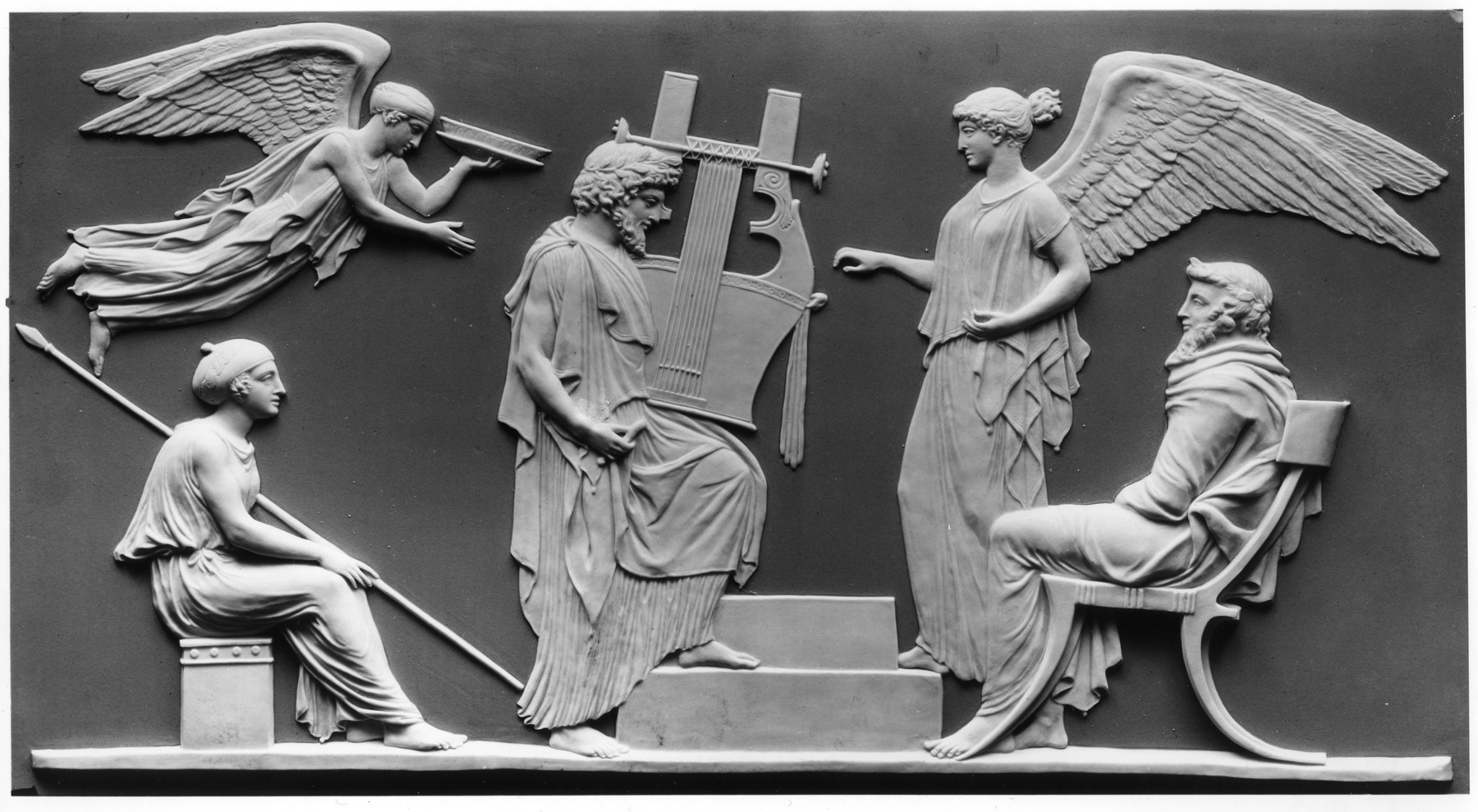Apotheosis of Homer
(18th and 19th Centuries )
This plaque has a light blue ground and is decorated with a scene of the Apotheosis of Homer in white relief. The design was taken by John Flaxman, the English sculptor, draughtsmen and designer, from Pierre d'Hancarville's publication of Sir William Hamilton's collection ("Collection of Etruscan, Greek and Roman Antiquities from the Cabinet of the Hon. William Hamilton," 1767, vol. 3, plate 31). It is considered the most important bas-relief by Flaxman for Wedgwood. Flaxman was the most consistent artist employed by Wedgwood in the eighteenth century, and with the exception of William Hackwood (whose work was largely in adapting, remodelling and repairing), he was the most prolific.
Inscription
Provenance
Provenance (from the French provenir, 'to come from/forth') is the chronology of the ownership, custody, or location of a historical object. Learn more about provenance at the Walters.
George Robinson Harding, London (date and mode of acquisition unknown); purchased by Henry Walters, Baltimore, 1911; by bequest to Walters Art Museum, 1931.
Conservation
| Date | Description | Narrative |
|---|---|---|
| 6/27/1960 | Treatment | cleaned |
Geographies
England, Staffordshire (Place of Origin)
Measurements
H: 7 3/4 x W: 14 11/16 in. (19.7 x 37.3 cm)
Credit Line
Acquired by Henry Walters, 1911
Location in Museum
Not on view
Accession Number
In libraries, galleries, museums, and archives, an accession number is a unique identifier assigned to each object in the collection.
In libraries, galleries, museums, and archives, an accession number is a unique identifier assigned to each object in the collection.
48.1473


